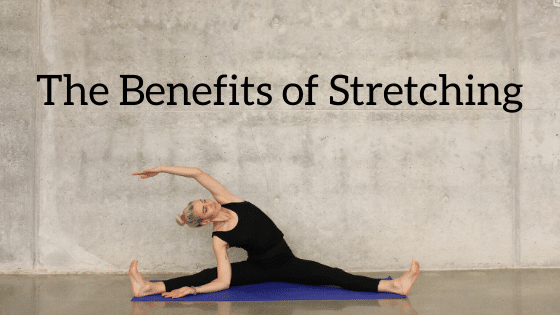Benefits of stretching before and after exercise
Stretching is an essential component of any exercise routine, and it offers numerous benefits when done correctly.
Stretching involves moving your body into a specific position to lengthen and stretch your muscles, helping to increase flexibility and range of motion. In this article, we’ll explore the benefits of stretching before and after exercise, and how it can improve your overall fitness and reduce the risk of injury.

Benefits of Stretching Before Exercise
Increases Flexibility and Range of Motion
Stretching before exercise can help increase flexibility and range of motion, allowing you to move more freely during your workout. By improving your flexibility, you may be able to perform exercises with better form and technique, which can increase your overall performance and reduce your risk of injury.
Improves Circulation
Stretching before exercise can help improve blood flow to your muscles, providing them with the oxygen and nutrients they need to perform at their best. Improved circulation can also help reduce muscle soreness and stiffness after exercise.
Enhances Athletic Performance
Stretching before exercise can help enhance athletic performance by preparing your body for the demands of your workout. By increasing flexibility and range of motion, you may be able to perform exercises with greater ease and efficiency, leading to better performance and results.
Benefits of Stretching After Exercise
Reduces Muscle Soreness and Stiffness
Stretching after exercise can help reduce muscle soreness and stiffness by increasing blood flow to your muscles and flushing out waste products such as lactic acid. This can help you recover faster from your workouts and reduce the risk of injury.
Improves Flexibility and Range of Motion
Stretching after exercise can help improve flexibility and range of motion, allowing you to maintain your gains in flexibility and prevent muscle imbalances that can lead to injury.
Promotes Relaxation and Recovery
Stretching after exercise can also promote relaxation and recovery by reducing tension in your muscles and promoting a sense of calm and relaxation. This can help reduce stress and anxiety, leading to better overall health and well-being.
How to Stretch Safely and Effectively
While stretching offers numerous benefits, it’s important to do it safely and effectively to avoid injury. Here are some tips for stretching safely and effectively:
Warm Up Before Stretching
Before stretching, it’s important to warm up your muscles with light aerobic exercises such as jogging or jumping jacks. This can help increase blood flow to your muscles and prepare them for stretching.
Hold Each Stretch for 30 Seconds
When stretching, it’s important to hold each stretch for at least 30 seconds. This allows your muscles to fully relax and lengthen, increasing the effectiveness of the stretch.
Stretch Both Sides
Make sure to stretch both sides of your body evenly to prevent muscle imbalances that can lead to injury.
Avoid Bouncing or Jerking
Avoid bouncing or jerking during stretches, as this can cause injury to your muscles and joints. Instead, move slowly and gently into each stretch, holding it for at least 30 seconds.
Listen to Your Body
Listen to your body during stretching and stop if you feel any pain or discomfort. Stretching should feel good and relaxing, not painful.
Conclusion
Stretching offers numerous benefits when done correctly, including increased flexibility, improved circulation, enhanced athletic performance, and reduced muscle soreness and stiffness. 온라인카지노